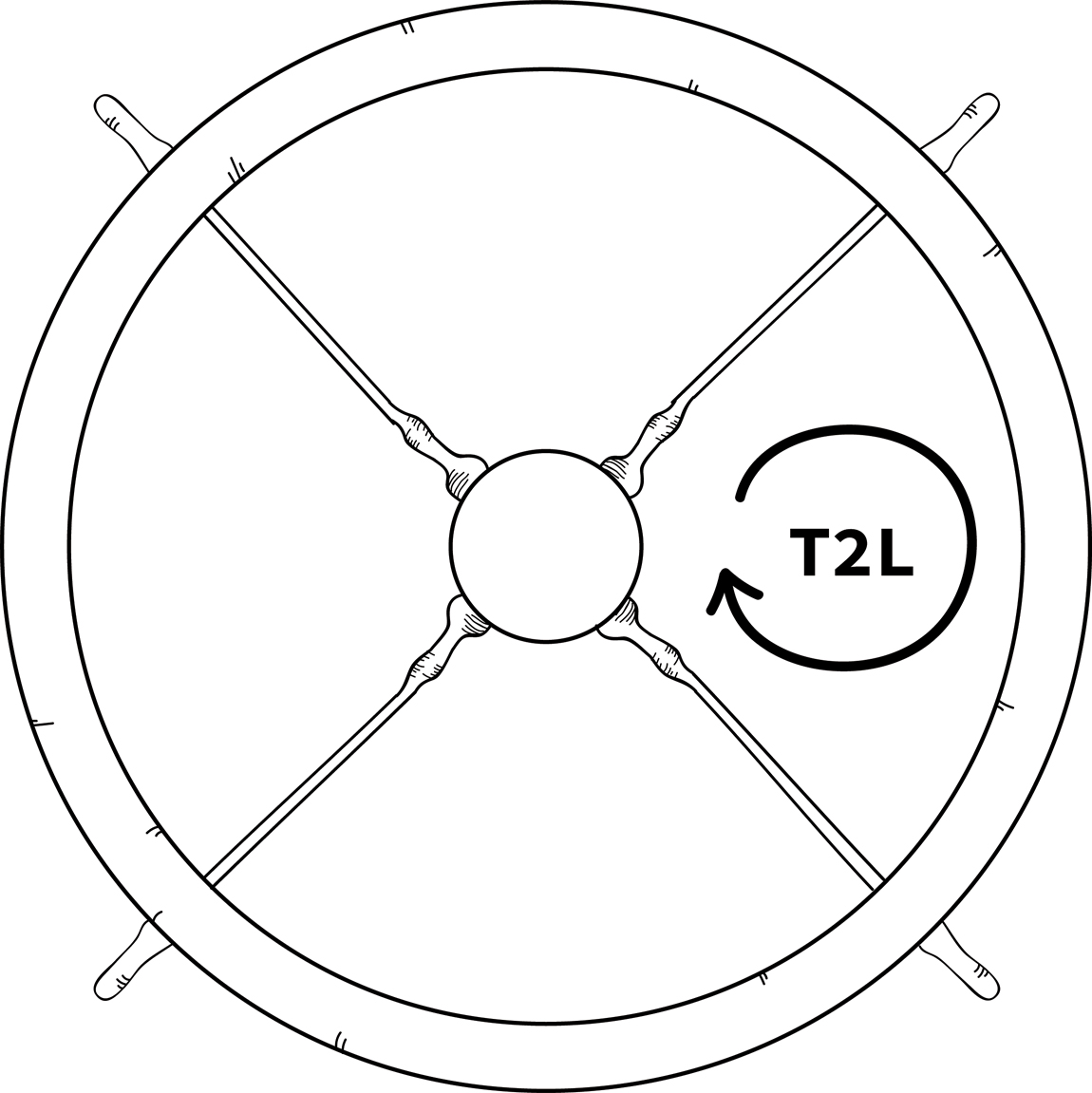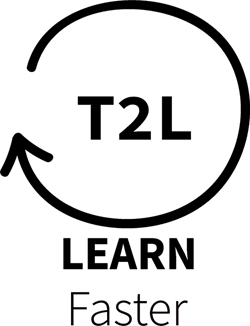3.1 How do you Know Your Teams are Doing the Right Things?
Only by preparing the meal and tasting it can one discover whether a recipe is a good recipe.

Introduction Questions
1. What is your proof that your teams are doing the right thing?
2. When will teams receive customer feedback on their choices of today?

Control Over Activities
If after a while it appears that products from a team are not sold, are unreliable, or require a lot of maintenance, the agile leader remains responsible for this. Does his team ensure that thousands of customers can visit the website at the same time? Do the reports produced contain the correct figures and information? Does his sales team not promise too many golden mountains in the sales process? The agile leader wants to know if the team members are performing their work well. Ideally, he ensures that the team receives immediate insight on this so that the team can make adjustments themselves. But he doesn’t want to micromanage the team, get detailed updates, and double-check the most important risks. On the other hand, he also doesn’t want to blindly trust the teams for years without any updates or information. But how does he find the balance between these two unwanted extremes? How can he have control over the activities without micromanaging on a daily basis and without blindly trusting for years without insight?
The solution lies in fast feedback from actual users. This is the learning loop: the process of retrieving user feedback and learning from it. The agile leader has to create an environment in which teams get quick feedback from actual users and can spend time on learning from this feedback. Agile teams then can optimize their learning loop. I will explain what this learning loop is exactly and how teams can adjust it.
![]() An agile leader inspires and supports his teams to continuously learn from the feedback from real users.
An agile leader inspires and supports his teams to continuously learn from the feedback from real users.
ING is a bank founded in the Netherlands. This company developed an app that makes it easy to transfer money. With the first version, ING’s customers could only view their balance. ING then made small improvements in the app, and new functionalities were added. By listening to the feedback from users, ING was better able to determine the needs of the users and how they could better connect to them. As a result, other and better choices were made about the functionalities of the banking app. Today users can look up credits and debits, create savings accounts, and issue payment requests. The agile approach thus resulted in an app that many customers use every day to their full satisfaction.
At the start, YouTube was primarily intended as a dating site where the user could create his own TV (tube) in order to find his future partner. By processing customer feedback, the vision of the site has changed and is now being used for all types of videos.
At the creation of Twitter, codes such as #hashtag and @at were not yet known at all. These actually arose spontaneously because a few customers started using them. Twitter used this feedback to innovate and built, among other things, search functionalities and trends around it. The founder of Twitter, Evan Williams, found the use of this kind of code too nerdy and that is why he didn’t use them. But by responding to real customer use, the codes are now commonly used on Twitter and other social media.
![]() The most important piece of information when trying to determine whether teams are doing the right thing is frequent feedback from actual users.
The most important piece of information when trying to determine whether teams are doing the right thing is frequent feedback from actual users.
So instead of getting all kinds of detailed reports, spending time double-checking risks, and asking questions on the forecast, the agile leader is often more effective when he spends time optimizing the learning loop. This is because the most important piece of information when trying to determine whether teams are doing the right thing is frequent feedback from actual users. But what is a good learning loop? How should “frequent” be defined? And how can the agile leader optimize this learning loop? I will answer these questions in the next paragraphs and sections.
What is the Learning Loop?
The cyclic process of retrieving feedback from users, learning from them, and implementing improvements in the product is called the learning loop. The learning loop is a means for the team members to know whether they are doing the right work. They can quickly adjust themselves based on new insights. By applying the learning loop, the team becomes more self-organizing and more agile. The learning loop is shown in Figure 3.1.

Figure 3.1 The learning loop
During the learning loop, the team goes through the following five steps:

|
1. Sketch. In this first step, team, stakeholders, and customers together think about all kinds of ideas to expand a product or service. The most important ideas are elaborated in a sketch: a drawing, illustration, or description. “Sketch” means that not everything needs to be worked out in detail, which happens during the next steps. Sketching increases creativity, leaving room for refreshing solutions. |

|
2. Build. In the next step, build, the team gets to work with the most important ideas and actually incorporates these into a product or service. The team elaborates on the details of the ideas in consultation with stakeholders and customers. In the meantime, the team gives demos of the product to stakeholders and customers for the following reasons:
|

|
3. Deliver. Once the ideas are built, a customized product or service can be delivered. The shorter time this step takes, the sooner the users can get started and the sooner the team can learn from the users. |

|
4. Use. In this step, customers will use the real product; this is not a demo. During use, the team keeps a close eye on which and how much feedback the customer provides. Feedback can of course be both positive and negative. In addition, the customer can give hard and soft feedback. Hard feedback consists of data such as visitor numbers, conversion percentages, usage figures, and user percentage per region. Soft feedback is, for example, reactions submitted via e-mail, messages on social media, evaluations, customer visits, and interviews. This step ends when enough feedback has been received to process or when an agreed amount of time has elapsed. Usually a couple of days to a few weeks are allotted. But if after five minutes of use by the customer it appears that the product is not working, the next step can be taken immediately. |

|
5. Learn. In this step, the focus is on learning. The team studies soft and hard feedback and thereby learns which ideas worked well in practice and which did not. As a result, the team grows, and it is always better to build products and services with which the customer is satisfied. In addition, the team can adjust or delete existing ideas and sketch new ideas based on the feedback. The learning loop has now been completed once, and the next cycle starts again at Step 1. |
If we only knew about the existence of this learning loop in 2005 when creating the new product Revent. Then we would have received feedback from users much earlier and we could have made better decisions to improve the final product.
So how does the agile leader know whether his teams perform the qualitatively right work? It can be concluded that the learning loop is crucial to answer this question. Without a learning loop, it is impossible for an agile leader to know whether his teams are doing well. As the teams go through the learning loop, the agile leader gets real insight through feedback from end customers. If many users are often satisfied, it can be concluded that the teams are doing the right thing.
The Agile Leader as an Experimentor
Successful agile leaders support their teams and mentor them in running experiments. They create a safe environment where the teams can learn from mistakes, experiments, and tryouts. The outcomes of the experiments are also proudly shared with other departments and upper management—even when the outcome is negative and has (some) bad consequences. These leaders have teams that apply this learning loop in their daily work. The role of the agile leader is that of experimentor; he acts as the mentor of the experiments so that the team can learn quickly and safely.
Coach the team to go through each step of the learning loop. Do not skip steps or take steps too quickly because of time pressure.
Ensure that the team is not working harder just to achieve their short-term results, but rather obtains feedback from users.
Inspire the team to have an open mind for this feedback. Don’t stick to assumptions, suspicions, and opinions. Rather, ask questions and be open to refreshing ideas from customers.
Explain why structurally reporting on user satisfaction and usage is so important.
When the users are highly satisfied, give the team all the appreciation and gratitude. They are very mature and need a lot of freedom to be motivated (see Part 2, “Facilitate Ownership”).
If user satisfaction is low, first pose a lot of open questions to the team, helping, guiding, and—if necessary—making adjustments to increase user satisfaction.
Brainstorm with the teams on the impediments for next steps to a smooth and faster learning loop. Remove these obstacles or give the team a mandate to remove them by themselves. Often, obstacles reside in part with other employees or departments. That is why it is important to look for cooperation and to make decisions together with fellow managers.
